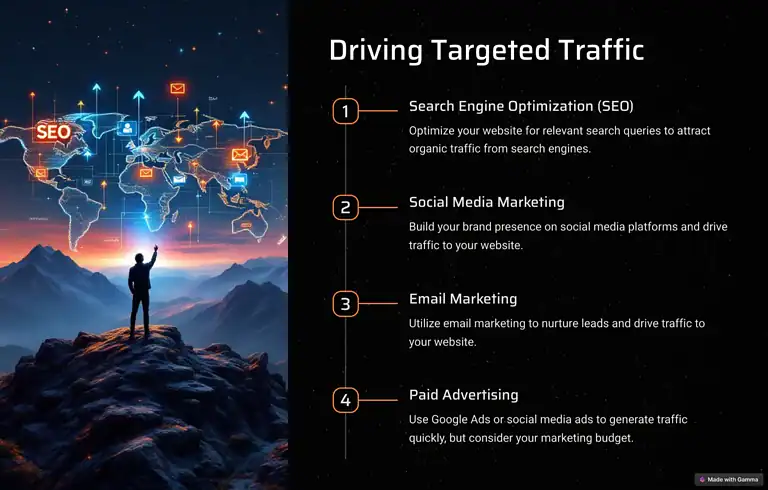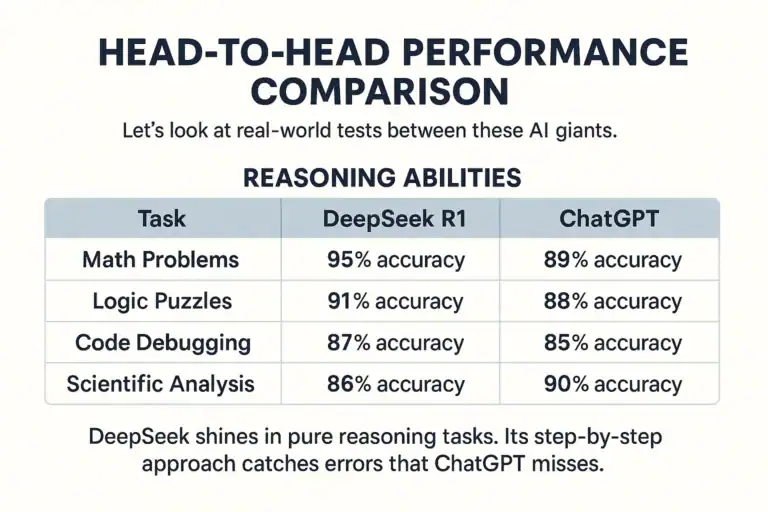AI Prompt Writing: Master the Art of AI Agent Swarms for Affiliate Content
Have you ever asked ChatGPT for something and gotten back… utter garbage? A bland, generic, and completely useless wall of text? You’re not alone. Most people treat powerful AI like a Magic 8-Ball, asking vague questions and hoping for a miracle. But the truth is, AI isn’t a psychic; it’s a super-powered GPS. It can take you anywhere you want to go, but you have to give it a precise destination. That skill, my friend, is AI Prompt Writing.
This comprehensive guide explores how to harness these advanced frameworks to create more persuasive, effective, and conversion-focused affiliate content.
Key Takeaways
- Your Secret Code for Perfect Prompts: Forget guesswork. The best prompts use the C.R.A.F.T. framework: Context, Role, Action, Format, and Tweak. Using this simple recipe is the fastest way to improve your results.
- Think Like a Director, Not an Actor: AI is your actor, and it needs a script. Vague instructions like “write an article” will get you a boring performance. We’ll show you how to provide the script—the tone, the audience, the goal—so the AI delivers an award-winning final cut. For a masterclass in content creation, explore these keys to creating successful content on your blog.
- The “Show, Don’t Just Tell” Method: The biggest pros don’t just tell the AI what to do; they show it. Providing 2-3 examples of what you want (a technique called “few-shot prompting”) is like giving the AI a perfect template to follow.
- Myth Buster: AI Won’t Steal Your Job, It’ll Change It: This isn’t about being replaced; it’s about being upgraded. Learning to prompt is like a writer getting a word processor after using a typewriter. It makes you faster, more efficient, and more creative. The opportunities in this space, including new prompt engineering jobs, are exploding.
- Quick Win: Give the AI a Job Title: The easiest trick in the book? Start your prompt by giving the AI a role. “Act as a world-class copywriter” or “You are a helpful assistant for a busy entrepreneur.” This instantly focuses the AI’s response.
- Embrace the “Tweak”: Your first prompt is a first draft, not a final command. The real magic happens when you analyze the AI’s output, ask yourself “how can this be better?” and then refine your prompt.
The Evolution of AI Prompt Engineering

What is an AI Agent Swarm Framework?
- Clear Role Definition: Each agent has a specific, well-defined role with distinct responsibilities
- Structured Communication Protocols: Standardized formats for information exchange between agents
- Workflow Orchestration: Logical sequencing of agent activities to build upon previous outputs
- Feedback Mechanisms: Systems for evaluating outputs and refining agent behaviors
- Central Coordination: An overarching system that manages the interaction between agents
🚀 AI Prompt Builder
Create powerful, effective prompts for any AI tool
1Define Your Goal
2Add Context & Details
3Specify Output Format
Example Templates
Website Creation
"Create a website that provides a seamless user experience..."
Marketing Headlines
"Generate five headlines for my homepage..."
Video Script
"Write a script for a video involving..."
Your AI Prompt
AI Agent Swarm Framework for Affiliate Content

Researcher Agent
- Market Analysis: Identifying trending topics, audience pain points, and market gaps
- Product Research: Gathering comprehensive data about affiliate products, including features, benefits, and differentiators
- Competitor Analysis: Examining top-performing affiliate content to identify successful patterns
- Audience Insights: Collecting data on target audience preferences, behaviors, and decision factors
Sample Researcher Agent Prompt:
Role: You are an expert affiliate marketing researcher with extensive experience in the [NICHE] market.
Task: Conduct comprehensive research on [PRODUCT/TOPIC] for an affiliate content piece.
Research Parameters:
1. Identify the top 5 competing products and their key differentiators
2. Analyze the top 10 ranking affiliate articles about this topic
3. Determine the primary audience segments and their specific pain points
4. Uncover unique selling propositions that competitors have overlooked
5. Identify high-conversion keywords and phrases used in successful affiliate content
Output Format:
- Provide your findings in a structured research brief
- Include specific data points, statistics, and quotes that will enhance credibility
- Highlight unique angles and opportunities for differentiation
- Suggest 3-5 content frameworks that would be most effective based on your research
SEO Optimizer Agent
- Keyword Strategy: Developing a comprehensive keyword approach including primary, secondary, and semantic terms
- Content Structure: Creating an optimized outline that aligns with search intent and algorithm preferences
- On-Page Elements: Specifying title tags, meta descriptions, heading structures, and schema markup
- Content Gaps: Identifying topics and questions that competitors have missed
Sample SEO Optimizer Agent Prompt:
Role: You are an expert SEO strategist specializing in affiliate content optimization.
Task: Transform the provided research brief into a comprehensive SEO-optimized content outline.
Optimization Parameters:
1. Develop a keyword strategy including primary (1), secondary (3-5), and semantic keywords (10+)
2. Create a content structure that aligns with top-ranking pages while addressing gaps
3. Specify all on-page elements including title tag, meta description, and H1-H4 headings
4. Incorporate schema markup recommendations for rich snippet opportunities
5. Include specific word count targets for each section based on competitor analysis
Input: [INSERT RESEARCHER AGENT OUTPUT]
Output Format:
- Complete content outline with all headings and subheadings
- Keyword placement recommendations for each section
- On-page element specifications
- Schema markup suggestions
- Internal linking opportunities to [WEBSITE] content
Conversion Booster Agent
- Persuasive Frameworks: Implementing proven copywriting structures like AIDA, PAS, or BAB
- Psychological Triggers: Incorporating principles of influence and persuasion throughout the content
- Objection Handling: Addressing common buyer concerns and hesitations
- Call-to-Action Optimization: Creating compelling CTAs strategically placed throughout the content
- Trust Building: Adding credibility elements that increase conversion potential
Sample Conversion Booster Agent Prompt:
Role: You are an expert conversion copywriter specializing in affiliate content that converts.
Task: Transform the SEO-optimized outline into a high-converting affiliate content piece.
Conversion Parameters:
1. Implement the [PERSUASIVE FRAMEWORK] copywriting structure throughout the content
2. Incorporate the following psychological triggers: [SPECIFIC TRIGGERS]
3. Address these common buyer objections: [SPECIFIC OBJECTIONS]
4. Create strategic CTAs for each stage of the buyer's journey
5. Add credibility elements including [EVIDENCE TYPES]
Input: [INSERT SEO OPTIMIZER AGENT OUTPUT]
Output Format:
- Complete content draft with all sections fully developed
- Highlighted CTAs and conversion elements
- Specific product recommendation sections with affiliate link placeholders
- Persuasive introductions and conclusions
- Credibility and trust-building elements clearly marked
The Complete AI Prompt Writing Framework: C.R.A.F.T.
Ready to stop guessing and start getting results? The C.R.A.F.T. framework is your new best friend. It’s a simple checklist to ensure every prompt you write is packed with the information the AI needs.
Let’s see it in action. Imagine you want to write an email promoting an affiliate product.
The Vague Prompt (Before C.R.A.F.T.):
“Write an email about the new ‘SuperFast’ web hosting service.”
This will get you a boring, generic email that no one will open. Now, let’s use C.R.A.F.T. to build a masterpiece.
- C – Context (The “Why” and “Who”)
This is the background information. Who is this for? What’s the goal?
Context: I’m an affiliate marketer. My audience consists of new bloggers who are struggling with slow websites. The goal is to get them to click the affiliate link to check out the ‘SuperFast’ hosting service.
- R – Role (The AI’s “Job Title”)
Give the AI a persona to adopt.
Role: Act as an expert digital marketing copywriter who specializes in persuasive, empathetic emails.
- A – Action (The Specific Task)
Use a strong verb to tell the AI exactly what to do.
Action: Write a short, compelling email.
- F – Format (The Desired Output)
How do you want the final product to look?
Format: The email should have an irresistible subject line, a short intro acknowledging the reader’s pain point (slow website), 3 bullet points highlighting the key benefits of ‘SuperFast’ hosting (speed, 24/7 support, one-click setup), and a clear call-to-action with my affiliate link.
Putting it all together (The C.R.A.F.T. Prompt):
“Act as an expert digital marketing copywriter who specializes in persuasive, empathetic emails. I need to write an email for my audience of new bloggers who are struggling with slow websites. The goal is to get them to click my affiliate link. Write a short, compelling email that includes: an irresistible subject line, an intro acknowledging their pain point, 3 bullet points on the benefits of ‘SuperFast’ hosting (speed, 24/7 support, one-click setup), and a clear call-to-action to ‘[Your Affiliate Link]’.”
See the difference? We went from a vague request to a detailed set of instructions that will produce a targeted, high-converting email. For more on this, learning how to grow your email list is a great next step.
Customizable Swarms for Different Affiliate Content Types
Product Review Swarm
- Experience Simulator Agent: Creates authentic-feeling product experiences
- Comparison Expert Agent: Provides detailed contrasts with competing products
- Technical Specialist Agent: Delivers accurate and comprehensive technical details
“Best X” Roundup Swarm
- Selection Criteria Agent: Establishes transparent and credible evaluation metrics
- Categorization Agent: Segments products to address different audience needs
- Decision Matrix Agent: Creates comparison frameworks that simplify complex choices
Deal Page Swarm
- Price Tracker Agent: Monitors and verifies current pricing and discounts
- Urgency Creator Agent: Develops legitimate scarcity and urgency elements
- Value Proposition Agent: Articulates why deals represent exceptional value
Implementing Your AI Agent Swarm

1. Choose Your Technology Stack
- Agency Swarm: An open-source framework built on OpenAI Assistants API
- AutoGen: Microsoft’s framework for multi-agent conversations
- LangGraph: A framework for building complex agent workflows
- Custom API Integration: Directly connecting multiple AI models through APIs
2. Define Clear Agent Roles
- Primary responsibilities
- Required expertise and knowledge
- Input expectations
- Output specifications
- Performance metrics
3. Establish Communication Protocols
- Input/output structures
- Data formatting requirements
- Information hierarchy
- Quality thresholds
- Error handling procedures
4. Implement Feedback Mechanisms
- Quality scoring systems
- Performance metrics
- A/B testing frameworks
- Continuous improvement processes
5. Start Small and Scale
- Implement the basic three-agent framework
- Test on a single content piece
- Evaluate results against traditional methods
- Refine agent prompts and workflows
- Gradually expand to additional content types
Advanced Techniques for AI Agent Swarms
Agent Specialization
- Headline Optimization Agent: Focuses exclusively on creating high-CTR headlines
- Product Comparison Agent: Specializes in creating detailed, fair product comparisons
- Social Proof Agent: Gathers and integrates authentic user experiences and testimonials
Cross-Agent Learning
- Share successful patterns across agents
- Identify and eliminate redundant processes
- Develop shared knowledge bases
- Create feedback loops between agents
Human-in-the-Loop Integration
- Human editors for final content review
- Subject matter experts for technical verification
- Marketing strategists for conversion optimization
- Compliance specialists for regulatory review
Measuring Success and Optimizing Performance

Key Performance Indicators
- Content Production Efficiency: Time and resources required per piece
- Search Visibility Metrics: Rankings, impressions, and click-through rates
- Engagement Metrics: Time on page, bounce rate, and interaction depth
- Conversion Metrics: Click-through rates to affiliate links and conversion rates
- Revenue Metrics: Earnings per article and ROI on content investment
Continuous Optimization
- Regular prompt refinement based on performance data
- A/B testing of different agent configurations
- Periodic competitive analysis to identify new opportunities
- Technology stack updates to incorporate emerging AI capabilities
Conclusion
References:
- Agency Swarm: https://github.com/VRSEN/agency-swarm
- AutoGen: https://microsoft.github.io/autogen/
- LangGraph: https://github.com/langchain-ai/langgraph
- OpenAI API: https://openai.com/api/
- Surfer SEO: https://surferseo.com/
I’m Alexios Papaioannou, an experienced affiliate marketer and content creator. With a decade of expertise, I excel in crafting engaging blog posts to boost your brand. My love for running fuels my creativity. Let’s create exceptional content together!







